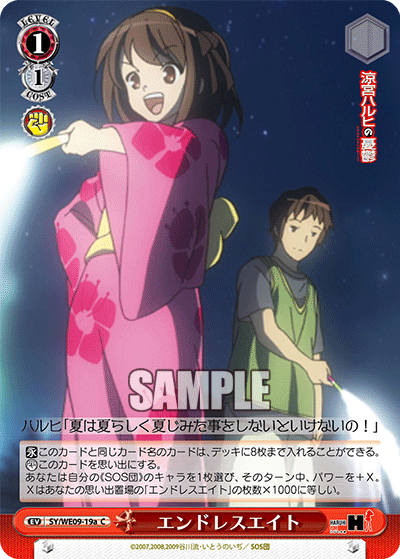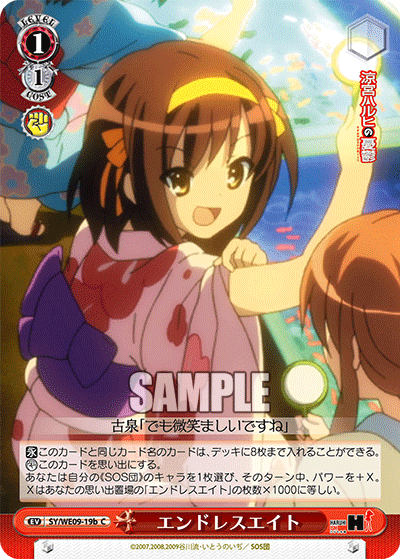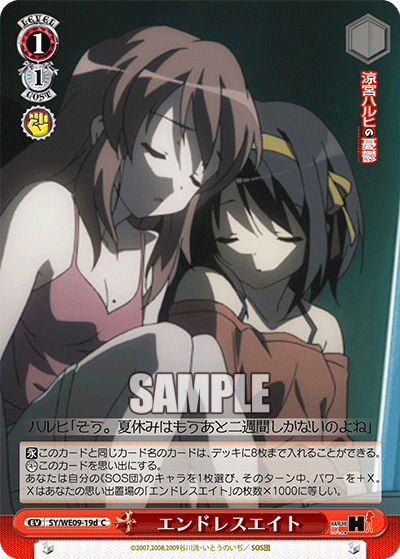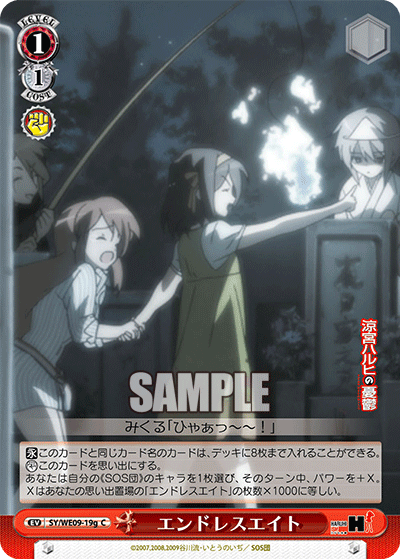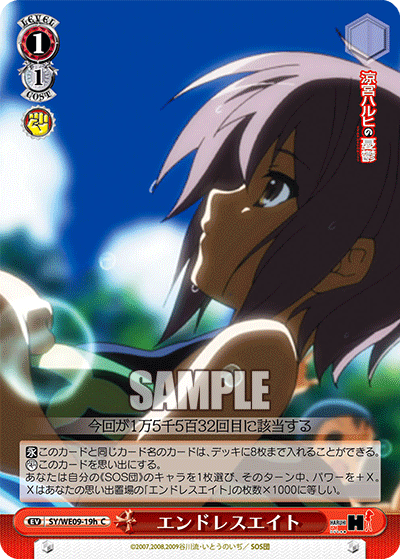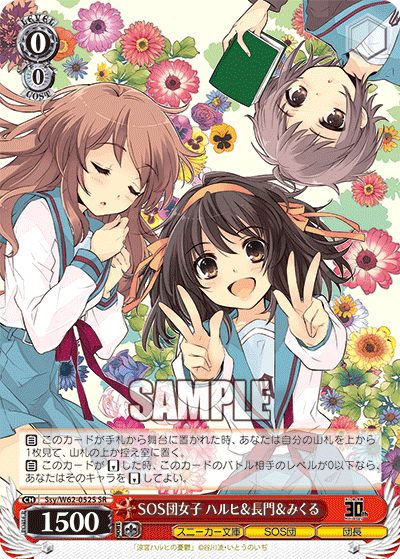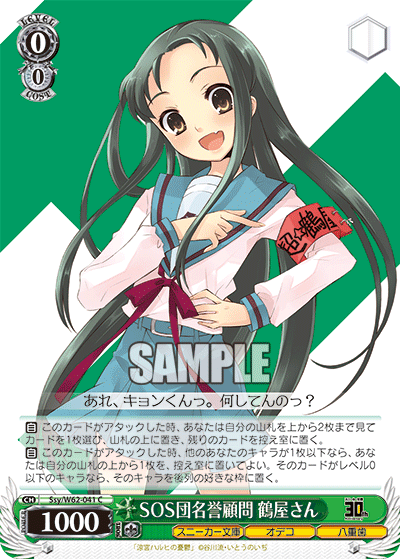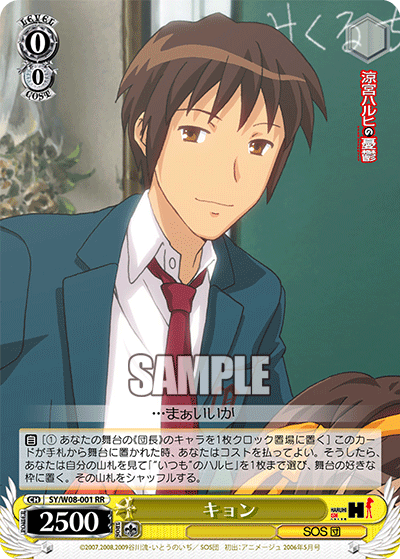In the Melancholy of Haruhi Suzumiya, an arc occurs where the same eight events repeat over eight episodes. As such, these eight episodes are neatly coined as the “Endless Eight”. Slight changes occur over these episodes as the same events are presented in different perspectives and angles. Even today, fans and viewers alike are boggled as to the true meaning behind the strange production. Some call it a representation for something special, perhaps the representation of parallel realities processed in an infinite loop…

Working off of our main focus here, the main goal of the deck is to assemble the finisher above and ends our opponents’ lives. The above finisher is nice, but realistically, due to the constraints of the conditions in the text, will only really proc once a game. Keep in mind that the finisher above does help you scrap up the last bits of the Endless Eight needed to set-up for its own finish with the second effect.
As implied by the deck’s name and the finisher, the deck’s goals are to stuff these exact eight events into memory. Obviously, all eight different arts should be used (optional) as to further fit to the theme of the deck. Early on, Endless Eight is a relatively weak backup with low value for its costs. But as the game progresses, Endless Eight grows in power, becoming quite a fearsome power boost.
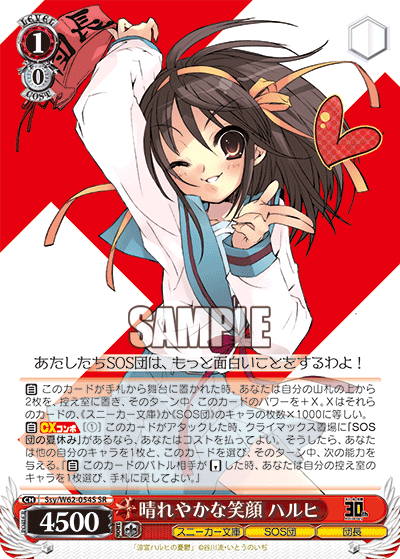

Due to the nature of the deck and the deck’s costs on charging up the Endless Eight(s) in memory, the best idea for the deck is to try and sustain some sort of board while compiling the associated event overtime. Keep in mind that the main finisher’s finishing ability is an activated ability rather than being played from hand, meaning that you can use its finishing effect despite being a standby target.

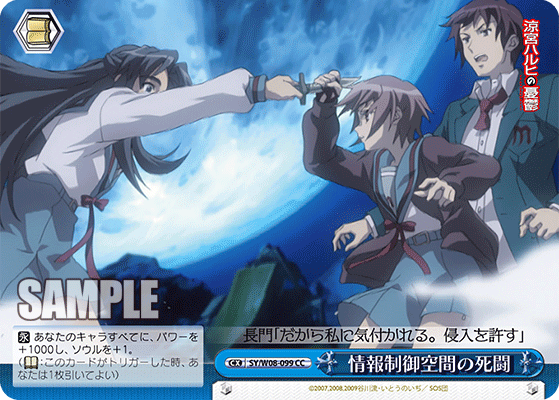
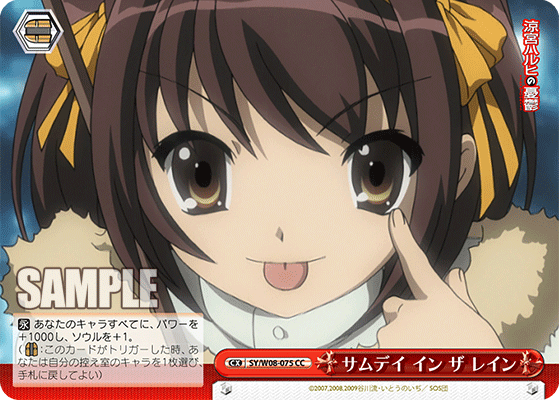
SY/W08-099CC 情報制御空間の死闘 (center)
SY/W08-075CC サムデイ イン ザ レイン (right)
This is where the deck-building reaches an impasse. The deck has two main issues: the events cost stock, and the events need to be cycled into hand. The level three finisher does help with managing two events on play, but you need exactly eight in memory for the finishing effect to occur. As such, the events should be ideally sent to memory throughout the game (ideally, the earlier the better), and the finisher should only be used to finish up with the final few.
Because of the complications of the deck and the mandated eight slots dedicated to the event, the other combo or climax to be used is difficult to exactly determine. Book climaxes are great as a potential means to draw the event, whereas, a salvage trigger can work to add more hand advantage to sustain your field.
Despite the power of the finisher with its eight instances of effect damage, the player must still be able to reach that point to be able to resolve that effect. As such, the other climax option depends entirely upon the player choice. Furthermore, a complication with book triggers arises as the there is a further dependency on many of the combo effects to be associated with that of the Alien (宇宙人), a trait not commonly found on many of the red cards, the main colour and majority of the deck.

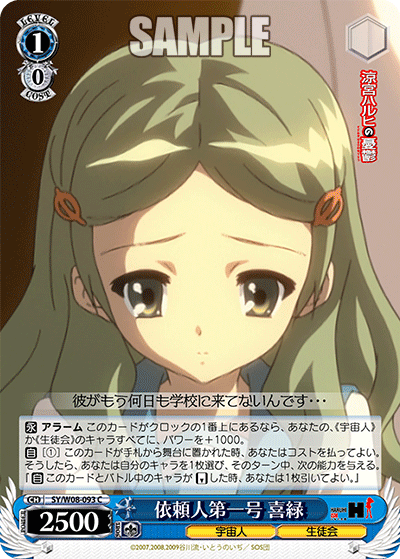
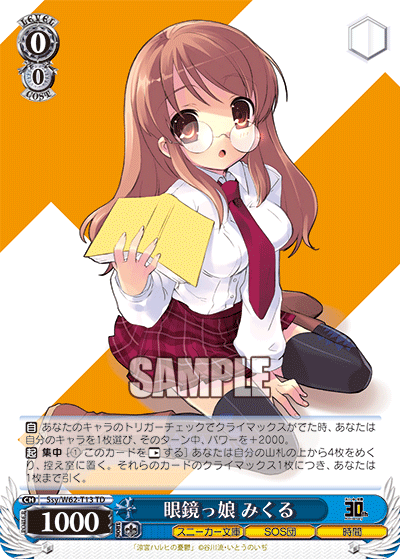
SY/W08-093C 依頼人第一号 喜緑 (center)
Ssy/W62-T13TD 眼鏡っ娘 みくる (right)
Considering the heavy need to obtain the events and bring them to memory, cards like the above are recommended. The Haruhi and Nagato in swimsuits provides a means to sustain another card on stage, essentially buying them another turn on board without causing any loss in field advantage. Kimidori has a rather nice alarm effect, but more importantly, her on play ability lets one of your cards potentially reverse for a draw, leading to an event ideally. Given that the deck is hard focused on drawing events, the Mikuru brainstorm is an essential piece for the deck as it has the potential of drawing events.
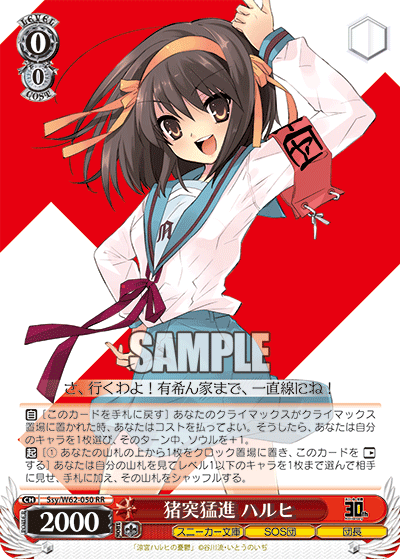
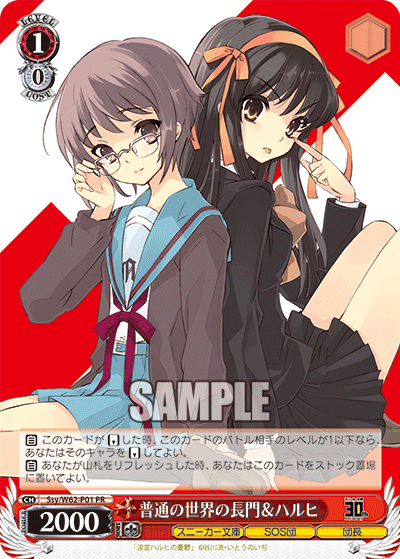
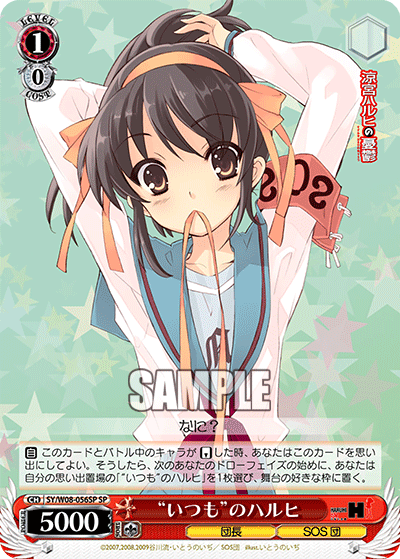
Ssy/W62-P01PR 普通の世界の長門&ハルヒ (center)
SY/W08-056SP-SP “いつも”のハルヒ (right)
Some other cards to consider are shown above. The Haruhi to the left is a way to continually fetch advantage at the cost of life while bouncing itself back to hand to push further advantage (especially good with standby). The center Nagato and Haruhi act as a means to potentially gain extra stock upon refreshing. Lastly, the Haruhi to the right is a way to perpetually maintain field and ensure that there are beaters on stage, assuming you can get her effect off.
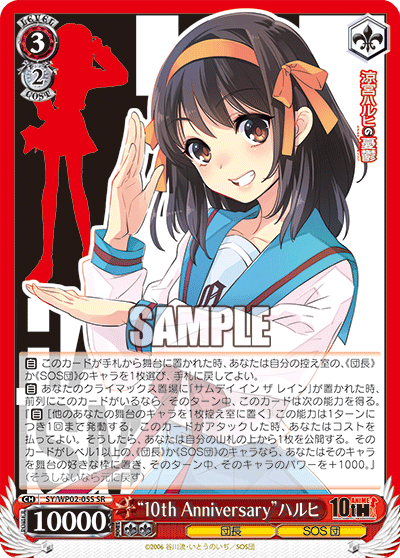

Assuming you are playing the associated climax for the above two cards, these two are great options to add as means to provide secondary finishing effects. The Haruhi to the left helps to grab a Dancho (団長) or S.O.S Brigade (SOS団) character, which are traits your main finisher above carries. The Haruhi to the right is a healing finisher, which is always beneficial to preserve life total. Furthermore, it can be changed into through another card to help push for early game advantage (especially great with standby).

One final card before entering the wrap-up is shown above. This Haruhi synergizes amazingly well with your events, causing her to hit enormous numbers for playing events, something you’d be doing ideally both turns if possible.

Generally speaking, since Endless Eight(s) are essentially backups, there is no need to run any other backup. However, the most important feature of the backup above is its primary ability as a potential redraw into another Endless Eight. For that purpose alone, the ability is well worth the gamble with its backup ability considered as a secondary bonus.
Give the entire set a look. There are plenty of options and choices depending on how you’d like to build along this deck structure. Keep in mind that the building can heavily change depending on which secondary climax you’d like to work with. May the odds ever be in your favour as you look to grab and place all eight exact Endless Eight(s) into memory. Cycle continuously as you place your key pieces into their place. Then watch as your efforts become rewarded as your opponent eats the reign of death.
